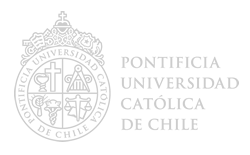The inclusion of distiller’s dried corn grains with solubles in the feed of laying hens during the production stage
Abstract
The aim of this study was to assess the effects of distiller’s dried corn grains with solubles (DDGS) in the diet of laying hens on their productive parameters (live weight, laying percentage, and feed intake) and egg quality (egg weight, mass, yolk color and shell thickness). This study was conducted in the Andes Mountains in Parral, Chile. It covered a span of 13 weeks of productive egg laying, ranging from the 31st to the 44th week of life of the hens. The experimental design was a random complete block using 225 Hy-Line Brown breed hens, distributed in 5 treatments, where each treatment consisted of three repetitions in 15 hens. The treatments included replacing soybean concentrate with DDGS at levels that corresponded to inclusion in the diet of 5, 10, 15 and 20%. The laying percentage, feed intake and feed conversion did not decrease with increasing levels of DDGS in the diet, but there was a slight decrease in egg weight and a lower egg mass. Yolk color increased with increasing levels of DDGS. The use of DDGS is possible as a replacement for soybean bran in levels up to 20% in the diet of laying hens without affecting their production, as demonstrated by the lack of significant differences among treatments in measured egg laying parameters.
El objetivo de este ensayo fue evaluar el uso de granos secos de destilería con solubles (DDGS) en la dieta de gallinas de postura en relación a los parámetros productivos (peso vivo, porcentaje de postura, consumo de alimento) y calidad del huevo (peso de huevo, masa, color de yema y grosor de la cáscara). Este estudio fue realizado en la Cordillera de los Andes, Comuna de Parral, Chile. Tuvo una duración de 13 semanas de postura, desde la semana 31 a la 44 de vida de las aves. El diseño experimental fue bloques completos al azar, usando 225 gallinas de la raza Hy-Line Brown, distribuidas en 5 tratamientos, donde cada uno tuvo 15 repeticiones de 15 gallinas. El tratamiento consistió en el reemplazo en diferentes niveles del concentrado de soya por DDGS, que correspondieron a niveles de inclusión en la dieta de 5, 10, 15 y 20%. El color de la yema fue mayor con aportes incrementales de DDGS. Se concluye que el uso de DDGS es posible como reemplazo del afrecho de soya en niveles de hasta 20% en la dieta de gallinas de postura, debido a la falta de diferencias estadísticas entre tratamientos postura de huevos.

